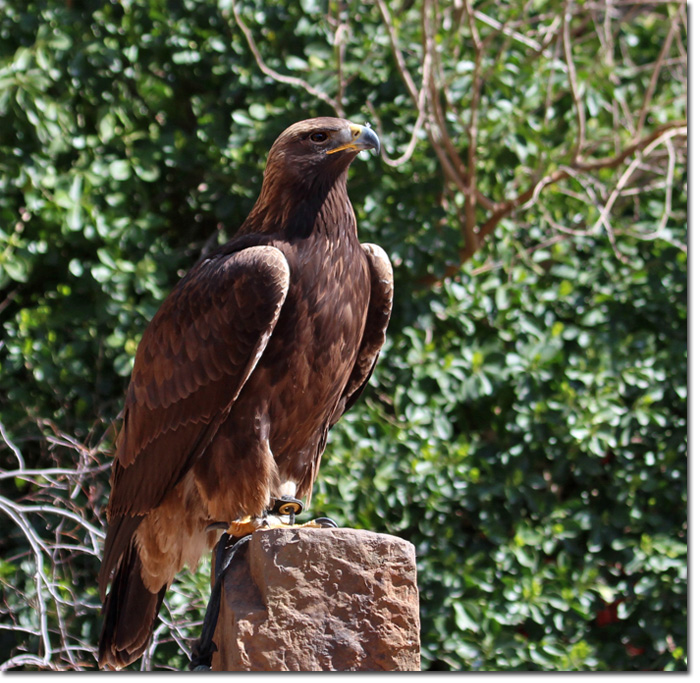
by John Shackford
Pat Velte asked a simple question: “What is the status of the Golden Eagle in central Oklahoma in winter?” “That’s a great question!” I replied—an excellent response, don’t you think, when you don’t have a clue!
Dr. George M. Sutton (Oklahoma Birds, 1967) said that in addition to the Golden Eagle (Aquila chrysaetos) being a permanent resident in the rough parts of Cimarron County, “Throughout rest of state, [it is a] fall and winter visitant…” But in Dr. Sutton’s Species Summaries of Oklahoma Birds, that Sutton maintained until his death in 1982, I can find only 4 records for central Oklahoma, all from around the 1950s. One of these was from the Lake Carl Blackwell area in Payne County, the other 3 referenced out of Norman, Oklahoma; 1 of these 3 was a female (UOMZ 2330) collected 11 mi. northeast of Norman, reported (and assumed collected) by F. H. Jensen. Thus Golden Eagles are rare enough in central Oklahoma that they should be carefully documented when observed.
Identifying Golden Eagles is somewhat difficult because some young Bald Eagles can look rather similar to adult Goldens. Young Bald Eagles (before aging into white head and tail adults) have some white mottling in the underwing feathers, whereas the adult Golden Eagle is all dark under the wing. Young Goldens have a distinctive white band in tail feathers in addition to some white on the underwing about 2/3rds of the way to the wingtip. One good identification point, if it can be discerned, is that the Golden Eagle has feathers all the way down to its toes, while Bald Eagles have no feathers from the tarsus (mid-leg) down to the toes.
Two of my favorite recollections about Golden Eagles involve birds seen during the breeding season in Cimarron County. I was once looking over a prairie dog town north of Boise City, Cimarron County. Part of the dogtown extended from a native prairie grass field into a field of wheat about 2 feet high. Rather unexpectedly I noticed a Golden Eagle flying low over the wheat, maybe 4-5 feet high. Very suddenly, the eagle made an almost unbelievably swift flick of its wings and disappeared into the wheat as it (no doubt) hit the ground. I moved closer (in the car) and saw the eagle eating prey, but could never verify that the prey was a prairie dog, although there can be little doubt that this is what the eagle had caught. The lesson I took away from this was the extraordinary agility of the Golden Eagle. I have never seen a Bald Eagle approach this degree of agility.
The other incident occurred close to Kenton, again in Cimarron County. One evening I was looking toward the west; a strong wind, perhaps 35 mph, was blowing from the south. Into this wind was flying a Golden Eagle. The eagle was making excellent progress, perhaps 35 mph, into the wind. What strength I was seeing! As I thought about it, I guessed that any eagle flying that hard into that strong a head wind at that time of day must be headed toward a nest. (The next day, as I was exploring the cliffs south of Kenton, I found the suspected nest.) Strength and agility—the Golden Eagle is a marvelous example of both.
In Sutton’s Species Summaries of Oklahoma Birds [1982], I found this interesting story, noted by Sutton, who quoted Green (1927, Wilson Bull, 39: 172). From 1905-1909 about 10 Golden Eagle specimens “were brought into the museum of the State Teachers College [in Alva, northwest Oklahoma] for mounting. From one of these was plucked the quill with which President Theodore Roosevelt signed the statehood bill for Oklahoma.” Green concluded from these eagles collected between 1905-1909 that the Golden Eagle had been “…formerly common in northwestern Oklahoma…” Who knows, but perhaps a hundred years prior to this the Golden Eagle may have been a common permanent resident of central Oklahoma as well.
